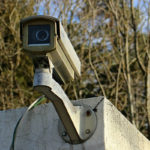Shopping For Dash Cams
Security cameras are not only reserved for residential or commercial properties. Aside from protecting your home or business, you can also keep an eye on your car and driving habits.
Dash cams are small security cameras that are installed on your dashboard. Depending on the type, you can monitor the road ahead, inside your car, or both. While these surveillance devices are not mandatory, their use in your own car can be rather beneficial. Some insurance companies offer discounts, you can gather useful video footage in the event of a car accident (whether involved or as a witness), and it can simply give you peace of mind.
If you’re looking to purchase a dash cam for your vehicle, here are a few things to look for:
- Looping Feature
The looping feature on a dash cam will enable it to automatically record over old video you no longer need. This will help save space while eliminating the need for you to delete the footage manually. - G-Force Sensors
Dash cams with g-force sensors can detect when you’ve been in an accident. This technology will enable the dash cam to record and save the footage recorded at the time instead of looping over it. - Overnight Recording
We may drive at all hours, so a dash cam that can record during nighttime reliably is crucial. Just because a dash cam has infrared or night vision does not necessarily mean that overnight footage is the best quality. Do research, read reviews, and look into the cameras performance in different environments. - Image Quality
With that said, you also want to ensure that your dash cam records in at least 1080p. For a better, wider view, opt for a dash cam that records in 2560×1080. Be sure to evaluate your needs and ensure that the field of view is sufficient for your standards. - Additional Features
You may want to invest in dash cams that have lane departure sensors to help keep you focused on the road, or motion sensors that can sense and record break-ins or vandalism. You may also want to invest in battery backups to ensure your camera doesn’t run out of power.
What other features or functions do you find helpful when it comes to dash cams? Share with us on Facebook, Twitter, LinkedIn, and Pinterest.
For a great selection of quality HD and IP security cameras and surveillance equipment, please visit SecurityCamExpert.com. To discuss your options, schedule a site survey, or request a FREE quote, please call 888-203-6294.
Stay Safe When Traveling
Memorial Day weekend is upon us, and thus, the unofficial start of the summer. Many people like to go on fun summer trips and vacations to relax and unwind from the daily stresses of life. Unfortunately, thieves know summertime is prime vacation time, meaning unoccupied homes ripe for invasion. However, if you prepare and enlist the proper security measures, you can put your mind at ease. Here are some things you should do to ensure your property (and you) are safe and secure.
Before You Leave
Preparations should begin before you even leave for your trip.
- Inform a trusted neighbor about your travel plans and ask them to keep an eye on your property. Or enlist a loved one to check in on your home periodically while you’re away. Any suspicious activity should be reported to the police.
- Lock all of your windows and doors, including doors leading to the garage and second story windows.
- Halt mail and newspaper delivery while you’re away. A tell-tale sign that nobody is home is a stack of mail and newspapers, along with garbage cans left at the curb. You can contact your newspaper carrier and the post office to temporarily hold your mail, and ask a trusted neighbor to bring your garbage bins in.
- Put your yard tools away. A ladder, rakes, and even patio furniture can all be used to gain entry to your home.
At The Airport
Airports are often busy and filled with people rushing to get around. You must keep a close eye on your luggage at all times, even once you board the plane.
- If you’re traveling alone, try to befriend someone in line. This could be someone who could assist you in keeping an eye on your luggage at the counter or going through security.
- If you are traveling with your laptop, put it on the x-ray belt last. That way, it will come out after your carryon luggage and hopefully around the time you are cleared (you don’t want your laptop out in the open unattended for too long).
- Once you board, you can either put your luggage under the seat in front of you, or in the overhead bin across the aisle from you. Both of these places are within your view so you can make sure that nobody is opening your luggage.
While On Vacation
Once you’ve arrived at your destination safely, don’t put your guards down just yet.
- Refrain from sharing too much information on social media. Even if you have the strictest security settings on your social networks, hold off on posting photos and “checking in” just in case.
- Share your itinerary with friends and family at home. In case something happens, this information can come in handy. Let them know your plans as well as departure and arrival routes and times.
- Keep cash and credit cards in separate places. Never carry your credit cards, cash, and passport at the same time – keeping these things apart may help you in case of pickpocketers. Keep some cash in your wallet and stash the rest in a pocket or money pouch. Utilize the safe in your hotel room (if available) and leave the majority of your cash there – only bring what you need for the day.
- Make copies of your passport before you leave. Leave one copy with a trusted friend or family member at home and take the other copy with you. When you’re out and about on vacation, take the copy with you and leave the original in a hotel safe until you travel again.
When it comes to traveling, you can never be too careful. Want to share your own safety tips with your traveling peers? Connect with us on Facebook, Twitter, LinkedIn, and Pinterest.
Secure your home and properties with quality CCTV surveillance systems and security equipment from SecurityCamExpert.com. Browse our stock online or call 888-203-6294 to discuss your options.
Troubleshooting Infrared Security Cameras
If you’re looking for surveillance around-the-clock, infrared night vision cameras are a smart choice. These security cameras enable you to monitor your business or property overnight, when light sources are minimal. Night vision cameras have infrared (IR) LEDs which emit their own source of light, but of course, nothing is perfect. When using infrared cameras, you may come across some of these common IR issues.
Foam Ring
Keep in mind that not every camera will have one, but most of them do. The foam ring helps to eliminate the reflection of the IR light on the glass. When the IR light reflects off the glass and back into the lens, it will wash out your footage, essentially rendering your camera useless. If your camera seems to be missing a foam ring, first make sure that your camera should in fact have one. If so, to eliminate the issue, replace the foam ring.
While the aforementioned situation is rather unlikely, having an improperly placed foam ring is far more common. If the foam ring is not flush with the IR board, or the base of the lens, it will produce a similar effect as a missing foam ring. To correct this, you will need to open your camera and reposition the foam ring accordingly.
Glass
Most security cameras come with a thin plastic protective film over the glass on the camera. It is in place to protect the camera, however, it should not be left on when the camera is in use. Once your camera is installed and you are satisfied with the placement and viewing angle, remember to remove and discard the film covering.
Another common issue with the glass is obstructions. Dirt, dust, and fingerprints on the glass can create infrared glare which interferes with the quality of your footage. Be sure to clean the glass routinely to ensure that your cameras are obstruction-free.
Infrared Glare
As mentioned, debris on the camera or glass reflection can cause IR glare, but there are other common causes. With outdoor cameras, you want to avoid aiming your camera at reflective services (ex. bodies of water, large lightly colored surfaces). For indoor cameras, be wary of the items or furniture around your camera as they may be close enough to reflect the IR LEDs. Despite all this, the most common cause of IR glare is improper installation. Cameras should be carefully mounted and tested in both day and low light conditions before the job is completed.
Infrared Reflection
Here are some of the common things that cause IR reflection:
- Your camera is indoors looking through a window. Because the IR will bounce off the window, IR cameras should not be mounted behind any glass.
- For cameras with a glass dome cover, be sure that all the IR LEDs are looking through the glass dome. If your camera is set improperly inside the glass cover, the IR light will bounce inside the camera and hit the image sensor.
- Remember to remove the plastic cover on the outside of the glass dome
Clean the glass dome with a damp microfiber cloth or windshield cleaner only. - If your camera is mounted too close to a wall, ceiling, or between two walls, the IR LEDs will be obstructed and will result in IR reflection.
Infrared Obstruction
As mentioned, when an object is too close to your IR camera, IR light will cause overexposure. In turn, to compensate, your camera will automatically dim the picture, reducing the IR intensity of your camera. Again, proper placement, installation, and testing will minimize these issues.
Share your own troubleshooting tips with us and your peers on Facebook, Twitter, LinkedIn, and Pinterest.
Find a great selection of cost-effective infrared night vision cameras, CCTV surveillance packages and much more at SecurityCamExpert.com. Call 888-203-6294 to learn more about our products and services or to request a free quote!
Workplace Surveillance
Some may argue that video surveillance in the workplace can be an invasion of privacy. However, as long as employee privacy is respected and existing surveillance laws are abided by, it can actually benefit both the employer and employees. Aside from decreasing misconduct and increasing safety, workplace surveillance has its advantages.
- Reduce Risk Of Employee Theft & Fraud
Employee theft, also known as “shrinkage,” is a growing problem for businesses. It is a bigger threat than identity theft and cyber fraud according to the FBI. In addition, fraud by employees is still a major issue, mainly for businesses in the financial and retail sector.
Video surveillance systems work to combat these issues, providing a way to keep a watchful eye over employees while producing video evidence when necessary.
- Improve Operations & Productivity
Businesses thrive on success and profits, therefore, anything that can increase productivity and improve operations is good thing. Installing security cameras in the workplace influences employees to stay on task, thus, plays a role in productivity and efficiency.
- Ward Off Illegal Visitors
Security cameras not only safeguard the business, but work to keep employees safe and protected. An effective surveillance system will help deter intruders and provide video evidence should a break-in or other incident occur. Security cameras can also monitor the different visitors your business has throughout the day.
- Enhance Safety
Workplace safety is expected and non-negotiable. All employees should feel safe in the workplace and security cameras can enhance that feeling. When safety measures are blatantly disregarded, management can review these instances and deal with them accordingly to prevent any unnecessary accidents in the future.
Share your own thoughts on workplace surveillance with us on Facebook, Twitter, LinkedIn, and Pinterest.
Whether you’re looking for a surveillance system for your home or business, let us help you! Visit SecurityCamExpert.com or call us at 888-203-6294 for more information or to request a FREE quote!
Secure Your Home
When was the last time you evaluated your home security? With summer, and likely a vacation or two, around the corner, now is a great to time reassess your home security measures and upgrade or improve them as needed.
Doors
A surprising amount of burglars enter homes through the front door, so be sure that all of your doors (especially the front door) are strong and secure. Inspect the door frame, ensure the hinges are protected, and if your door has a mail slot, make sure someone can’t reach through and unlock the door.
To further safeguard your doors and entryways, you can install a deadbolt and/or add a strike plate. You can even upgrade to smart locks or install a doorbell camera. And if you have any sliding glass doors, remember to reinforce them by using a window bar or dowel in the track. Or you can invest in a door sensor or glass break sensor, which will alert you if the door is opened or tampered with.
Windows
Another common entry point for burglars is windows. And unfortunately, window latches and locks can be flimsy and rather ineffective. To better secure your windows, install improved locks or key-operated levers, or implement window bars. You can even reinforce the glass with window security film and install window or glass break sensors. In addition, you can plant prickly bushes under first-floor windows, but be sure to keep them trimmed.
Lighting & Landscape
Intruders want to be as inconspicuous as possible, so why not shine a light on them? Outdoor lighting can help to keep burglars at bay. Light up your yard (front and back) and pathways and place lights near the garage or other outdoor structures. Motion-activated lighting, solar-powered lights and timers can be helpful as well.
While the lights help to prevent burglars from hiding in the darkness, maintaining your landscape plays an important role, too. Be sure that trees and shrubs are trimmed down to eliminate any hiding spots. If there are trees near windows, remove them or add extra security to those windows. And remember to put away stools, ladders, and other tools and lock your gates and sheds.
Garage
An attached garage offers another way to access your house. But even if it is detached, burglars know there’s likely good stuff stored in there. You should always lock all doors to the garage, both interior and exterior. Consider keeping your garage door opener in the house. That way, a burglar can’t steal it from your car. You may even consider upgrading to a smart garage door opener, which alerts you when the door is opened or closed and enables you to control it remotely.
Wi-Fi Network
Securing your home wireless network is also an important part of your overall home security. To keep hackers off your home network, be sure to secure your wireless router and enable WPA (Wi-Fi protected Access) or WPA2 encryption. You should also rename and hide your network, use a firewall, install antivirus and anti-malware protection, and always create strong passwords and change them periodically.
Security System
These days, you can find a home security system that suits your needs and budget. Depending on your unique situation, you may consider DIY versus professional installation, along with the upfront and monthly costs, and the different features offered.
If they are not part of your security system, you may want to install security cameras outdoors, indoors, or both. Some features to look for include remote access, motion detection, night vision, and Wi-Fi capability. If you need assistance, you can visit SecurityCamExpert.com or call us at 888-203-6294.
Your security is our priority. Contact us to learn more about our products and installation services, site surveys, or to request a FREE quote! You can also connect with us on Facebook, Twitter, LinkedIn, and Pinterest.
Upgrading Security Camera Systems
It’s about time to upgrade your analog cameras to HD-CVI or IP security cameras. By upgrading, you are equipping your home or business with more advanced surveillance solutions. These advanced cameras deliver top quality, with 720p or 1.3 Megapixel and up to 4K resolution. Worried about the compatibility with your current system and the new cameras? Luckily, there are products out there to aid in a smooth transition. And if you have any questions, you can always call SecurityCamExpert.com at 888-203-6294.
Here are some tips to help you ease into a better quality surveillance camera system.
Storage
If you are only upgrading a few cameras, hybrid and tribrid DVRs allow you to use new HD cameras with your existing equipment. However, higher resolution cameras will use more disk space.
If you want to maximize your storage space, you may want to consider is decreasing the frames per second at which you are currently recording. For example, if you are recording at 30 frames per second, you may scale that back to 15 frames per second. You will save storage space while still producing quality images.
In addition, if you are currently recording around the clock, you may want to switch it to motion-only. This setting allows your camera to remain in standby mode and only record when motion is detected.
Wireless Bridge
A wireless bridge is used when you want to install a camera in an area where it is impossible to run cables. It can be set up as a transmitter or a receiver. Each camera needs one transmitter, but the receiver can receive signals from multiple transmitters.
But remember, this will only work with network or IP cameras. And for most cameras, you will still need a power source.
Baluns
You may be hesitant to upgrade because wiring your system can be a costly hassle, however, baluns could be the easy and convenient answer.
Your existing cables depend on the type of security camera system you have. Most IP camera systems use CAT5 or CAT6, while traditional analog systems and HD-CVI systems run on cables more commonly known as Siamese cable (which is coaxial cable along with and 18/2 power wire).
A balun is a type of converter that you put on each end of your existing cable. Depending on the type, it will either allow you to convert CAT5 to an analog signal or use your analog cables with IP cameras.
DDNS (Dynamic Domain Name Service)
For remote access and viewing of your surveillance footage, you need to connect your system to your home or business IP address. Unfortunately, these are usually provided by your internet service provider (ISP) and they will often change this IP address, making it difficult for you to connect to your system.
The DDNS is a personal domain name (ex. “YourLastName.DDNS-service.com”) which will always resolve back to your home IP address regardless of what the IP address is, even after it has changed. Thankfully, a DDNS configuration is built-in most new security recorders, so when your home IP address changes it will contact the DDNS service and update it so that your domain name will always resolve back to your home or business.
If you need helping choosing a new security camera system for your home or business, please feel free to contact us! You can browse our stock online or give us a call to speak with one of our representatives directly. You may also connect with us on Facebook, Twitter, LinkedIn, and Pinterest. Your security is our priority and we are always happy to help.
Security Camera: What NOT To Do
When it comes to security cameras, there are many mistakes that can compromise the effectiveness of your surveillance system. Don’t make these mistakes when installing your security cameras.
- Don’t use indoor security cameras outdoors.
Sounds like common sense, right? Indoor security cameras are tailored to indoor conditions, so using them outside would produce poor quality videos and images. And the same goes for outdoor cameras being used indoors – just don’t do it.
- Don’t mount security cameras in or near direct sunlight.
Direct sunlight can damage your camera overtime, decreasing its overall lifespan. In addition, it can wash out images, deeming your footage useless. Consider investing in outdoor housing that can protect your cameras and adjusting the angle of your camera so that the sunlight does not interfere with your images.
- Don’t place your camera in an area where it will be completely exposed to the weather.
You want to be wary of weather conditions when installing outdoor cameras. Be sure to check the IP ratings of the cameras and any additional housing you may invest in. And, if possible, install your outdoor cameras under the eaves for added protection.
- Don’t install surveillance cameras in areas that are not well lit at night.
That is, unless you have a night vision camera. Cameras without night vision or a comparable feature will not produce any usable images in the dark.
- Don’t install cameras without informing employees, neighbors, the public, or loved ones.
When recording, you must inform others that they are under surveillance. The easiest way is to install a well-designed sign in a high traffic area so that it is seen by everyone. Be sure to check with local laws and ensure you are in compliance with all laws before implementing your surveillance system.
- Don’t use substandard or weak mounting equipment.
If your mounting equipment is not as sturdy, you decrease performance and safety and leave your equipment vulnerable to tampering or theft. Also, it should go without saying, but please do NOT attach your cameras to the gutter.
- Don’t place cameras where there may be obstructions.
Again, this may sound like common sense but it must be said. While it may seem like there are no obstructions when you first install your cameras, sometimes natural elements can change that. For example, on a particularly windy day, a branch from a nearby tree may block your camera’s view. Be sure to consider all potential obstructions before settling on a location.
- Don’t leave wires exposed.
By doing so, you may invite others to hack, damage, or disable your camera system. In addition, exposed wires can pose a safety hazards for young children and adults.
- Don’t place your camera where it will be easily accessible or within reach.
Again, this makes it easier for intruders to hack, disable, or even steal your cameras. It helps to install your cameras high and out of reach, not only to prevent theft or vandalism, but to also get a better view of the area.
- Don’t merely place your camera viewing your front door.
Of course the front door is an important place to monitor, but really, you should be watching all potential points of entry (ex. sliding doors, basement doors, windows).
If you have any other security camera tips to share, connect with us on Facebook, Twitter, LinkedIn, and Pinterest.
Need help finding the right security system for you? Choose SecurityCamExpert.com! We can guide you through the process of choosing the security cameras that will best suit your needs. If you are in Southern California, we can even install the system for you. Visit us online or call 888-203-6294 to learn more.
Hiding Security Cameras
Despite the presence of security cameras being a visual deterrent for potential burglars, some home owners would rather conceal their surveillance system. When security cameras are present, intruders may often attempt to damage or disable them, so hiding them may help to keep them safe. Visible security cameras can also be an eyesore, and may make it a bit awkward when you have guests over.
However, if you’re going to conceal your security cameras, be sure to abide by the laws in your country and state. To be safe, you may want to consult with an attorney about legalities and the specific ways you plan to use your hidden cameras.
Here are some clever ways you can hide your security cameras.
- Plants
Whether real or fake, hiding a camera in a potted plant is a great idea. Plants are a great way to liven up a room and not many would suspect to find a camera hiding there. Just be sure that the view is not obstructed by leaves or other parts of the plant. - Bookshelf
Not many burglars dart to the bookshelf when breaking and entering. You can place a small camera in a section that is rarely accessed, or even toward the top shelf for a better viewing angle. - Birdhouse
For outdoor security, you can hide a security camera in a birdhouse. Because there is often a restricted view with this, be sure to aim the birdhouse at the area you wish to monitor. - Box Of Tissues
Many of us keep tissue boxes around the house so why not hide cameras in there? You can make necessary holes in the box to hide the camera, and position as many as necessary around the home. - Plush Toy
This is a popular choice for nanny cams as you often find plush toys in the child’s bedroom or play rooms. Some hidden cameras are sold as plush toys, or you can do-it-yourself at home. Simply cut a small hole in the back of the toy, position the camera inside the head with the lens aligned with one of the eyes, support the camera with the stuffing and sew up the hole.
Do you have any other hidden camera locations to share? Connect with us on Facebook, Twitter, LinkedIn, and Pinterest.
For the best selection of indoor and outdoor security cameras and surveillance equipment, please visit SecurityCamExpert.com. Aside from our surveillance systems, we also offer installations services, site surveys, and free quotes – call 888-203-6294 to speak with one of our experts today!
Video Surveillance For Businesses
Installing a video surveillance system for your business protects your employees, customers, inventory, and your business itself. Understandably, such an important asset can take a considerable amount of time and money when it comes to shopping, deciding, installing and implementing a comprehensive security solution. If you’re on the fence on whether or not to purchase and install a video surveillance system for your business, review some of these priceless benefits you can enjoy.
- Reduce & Prevent Theft
Strategically placed security cameras can prevent vandalism and theft. Year after year, companies lose thousands due to theft, whether internal or external. By installing surveillance videos, you can deter bad behavior or collect evidence when needed. - Real-Time Monitoring
Most modern cameras allow for remote video monitoring. This can be extremely helpful for business owners who are not always on site. In addition, approved employees can monitor critical areas of the property, enabling continuous surveillance. If you have multiple locations, you can connect all the cameras to the same network, allowing you to keep an eye on every location remotely. - Improve Productivity
The presence of security cameras can influence employees to be efficient and on their best behavior. The cameras can also improve communication between different locations and departments, which can boost productivity overall. - Resolve Business Disputes
Much like cameras can provide evidence for thefts or vandalism, video footage can prove valuable when a dispute arises as well. Managers can reference video footage along with firsthand accounts to find out what happened in order to come to a fair resolution. Security cameras can also play a role in reducing workplace violence. - Provide Evidence For Investigations
As mentioned, video surveillance footage can provide evidence when an incident occurs. By reviewing the footage when criminal or suspicious activity occurs, you can potentially identify the persons involved. And you may submit footage to authorities as needed. - Make Digital Storage
In relation to reviewing footage, digital storage makes it much easier to search and find footage when needed. IP camera systems store all recorded footage digitally using a hard drive, network served or an NVR (network video recorder). - Improve Customer Experience
With the use of data analytics with your surveillance, businesses can optimize store traffic patterns and improve product placement. They can also offer a better shopping experience as customers may perceive the presence of security cameras as the business caring for the safety and security of their customers and employees. - Save Money
Video surveillance systems can be more affordable than hiring full-time security officers for the grounds. And thanks to advanced night vision features, most security cameras can give you peace of mind even when your business is unoccupied overnight.
Whether for your business or home, shopping for a security camera system can be overwhelming. If budget is a concern, or you are unsure of what you need, we can help. Call 888-203-6294 and we can guide you to the cameras and equipment that would best suit your needs and budget. We offer a wide variety of affordable security cameras and surveillance systems – browse our stock online at SecurityCamExpert.com. You may also connect with us on Facebook, Twitter, LinkedIn, and Pinterest.
Choosing The Best Nanny Cam
Nanny cams help worried parents keep an eye on their kids or their own elderly parents. They allow individuals to check in at home for peace of mind. Whether you will be installing them in hidden areas or in plain sight, here are a few things you should consider when purchasing a nanny cam.
- High Definition (HD)
This is a video format which delivers a high pixel rate for improved clarity. While this is a great feature to have, it does increase the price and requires more storage. Think about your storage requirements, budget, and individual needs before making a decision. - Audio
Nanny cams with audio let you speak to the persons in the room remotely. Before choosing a camera with two-way audio features, please look into legalities and follow the audio recording laws when you need to record audio. - Wireless
Wireless security cameras allow you to watch live video feeds rather than recording for later review. You may want to opt for wireless cameras if you will be using them for a baby monitoring system. - Compatibility
For remote monitoring, you want to be sure that your nanny cams are compatible with your smartphone or devices. That way, you can easily check in on your kid or parent and caregivers while you’re away. - Motion Activation
Because monitoring our surveillance feed 24/7 is not feasible, motion-activated alerts are a great asset. Motion activation immediately sends you alerts when motion is detected in the range of view. - Recording
While most nanny cams allow video recording on a SD card, this limits your storage capacity. For improved storage and reliability, choose a nanny cam with a network video recorder (NVR) or cloud storage. - Viewing Angle
Choosing a wide-angle nanny camera will depend on the size of the room or area you would like to cover. If you do have a large space to monitor, be sure that your security camera has a pan-tilt function. - Power Source
Typically, you can choose between battery-powered or AC power nanny cams. Battery-powered nanny cams use rechargeable battery packs, while AC powered cameras are powered directly from the outlet. Your decision may be dependent upon where you plan on placing your nanny cam. If no outlet is available in the area, you may need to use a battery-powered nanny cam. Be sure to look into battery life and invest in a backup battery should you go that route. If you need ongoing monitoring and recording, you may want to consider AC powered nanny cams.
If you need assistance choosing a nanny cam or home security cameras, please do not hesitate to call 888-203-6294 to speak with us. You may also browse our stock online at SecurityCamExpert.com or connect with us on Facebook, Twitter, LinkedIn, and Pinterest.









